Figure shows a smooth vertical circular track AB of radius R. A block slides along the surface AB when it is given a velocity equal to √6gR at point A. The ratio of the force exerted by the track on the block at point A to that at point B is
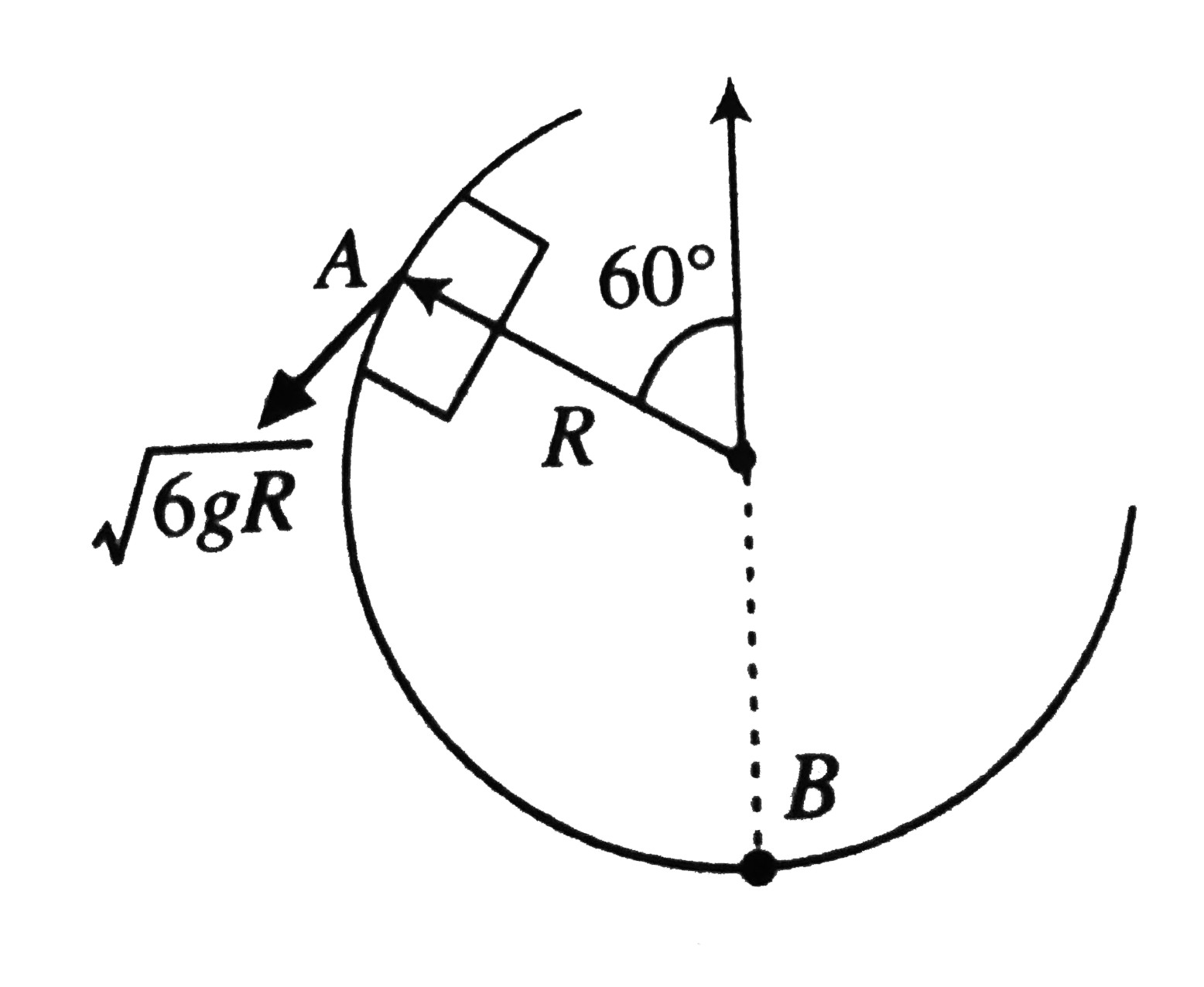
(a) 0.25
(b) 0.35
(c) 0.45
(d) 0.55
The correct Answer is:D
NA+mgcos60∘=mv2AR
NA=mv2AR−mgcos60∘
=6mg−0.5mg=5.5mg
12mv2A+mgR(1+cos60∘)=12mv2B
v2A+2gR(1+12)=v2B
6gR+3gR=v2B
v2B=9gR⇒vB=√9gR
NB=mg+mv2BR=10mg

Topper's Solved these Questions
- WORK, POWER & ENERGYBOOK - CENGAGE PHYSICS ENGLISHCHAPTER - WORK, POWER & ENERGYEXERCISE - Multiple Correct
25 Videos
- WORK, POWER & ENERGYBOOK - CENGAGE PHYSICS ENGLISHCHAPTER - WORK, POWER & ENERGYEXERCISE - Linked Comprehension
55 Videos
- WORK, POWER & ENERGYBOOK - CENGAGE PHYSICS ENGLISHCHAPTER - WORK, POWER & ENERGYEXERCISE - Subjective
23 Videos
- VECTORSBOOK - CENGAGE PHYSICS ENGLISHCHAPTER - VECTORSEXERCISE - Exercise Multiple Correct
5 Videos
Similar Questions
AOB is a smooth semicircular track of radius r. A block of mass m is given a velocity √2rg parallel to track at point A. Calculate normal reaction between block and track when block reaches at point O.
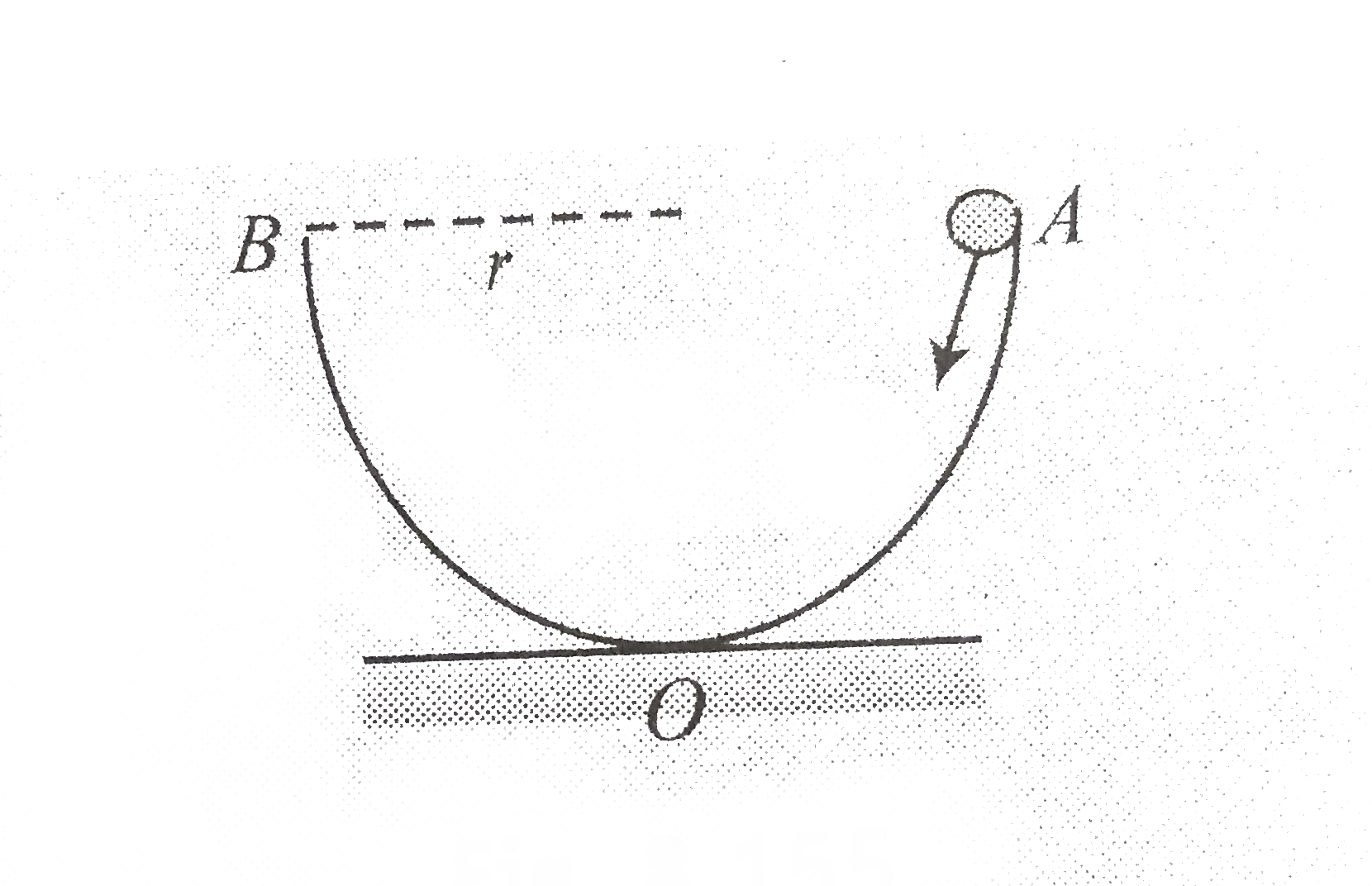
View SolutionA circular disc of radius R rolls without slipping along the horizontal surface with constant velocity v0 . We consider a point A on the surface of the disc. Then, the acceleration of point A is
View SolutionA particle tied to a string describes a vertical circular motion of radius r continually. If it has a velocity √3gr at the highest point, then the ratio of the respective tensions in the string holding it at the highest and lowest points is
View SolutionA small block of mass 1 kg is a circular are of ratius 40 m . The block sides along the track without topping and a frictionnal force acts on it in the direction opposite in the instrmens velocity . The work done in evercoming the friction up to the point Q as shown is the figure below is 150J
(Take the acceleration due to gravity g=10ms−2)
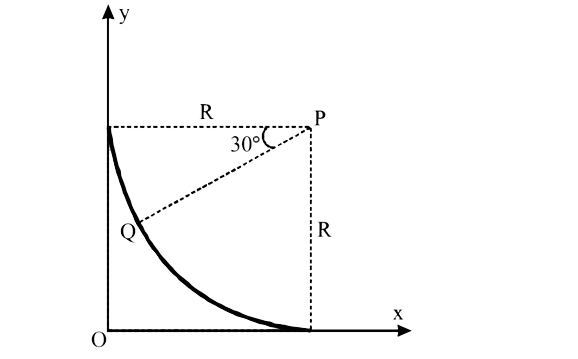
The speed of the block when it reaches the point Q is
View SolutionA small block of mass 1 kg is a circular are of ratius 40 m . The block sides along the track without topping and a frictionnal force acts on it in the direction opposite in the instrmens velocity . The work done in evercoming the friction up to the point Q as shown is the figure below is 150J
(Take the acceleration due to gravity g=10ms−2)
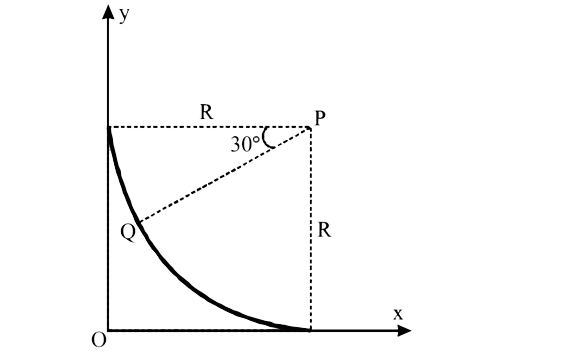
The magnitude of the normal reaction that acts on the block at the point Q is
View SolutionA roller -coaster car a mass of 500kg when fully loaded with passengers
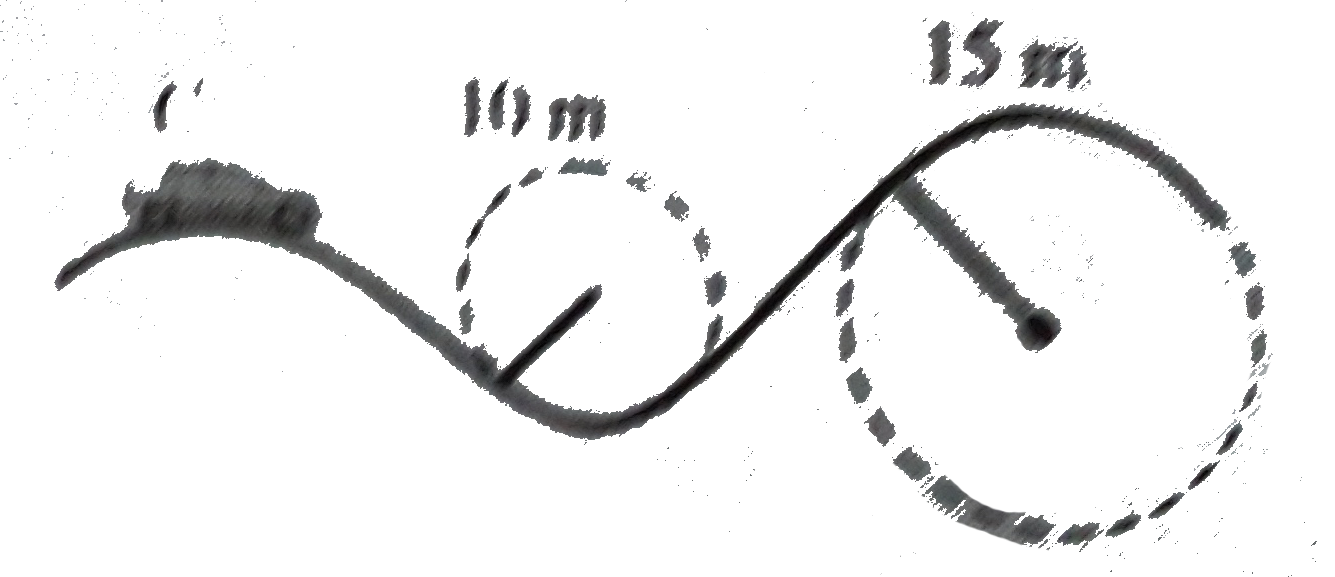
a. If the vehicle has a speed of 20.0ms−1 at point A what is the force exerted by the track on the car at this point ?
b. What is the maximum speed the vehicle can have at point B and still remain on the track?
View SolutionA block of mass m is placed on a vertical fixed circular track and then it is given velocity v along the track at position A on track. The coefficient of friction between the block and the track varies with the angle θ . If the block moves on track with constant speed then the coefficient of friction is
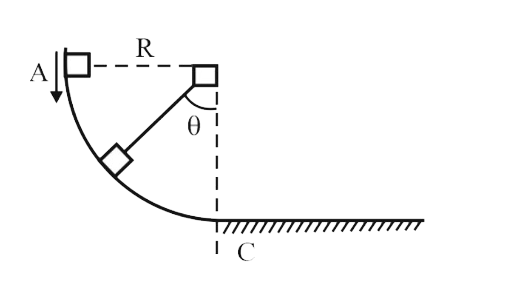
View SolutionMass 2m is kept on a smooth circular track of mass m which is kept on a smooth horizontal surface. The circular track is given a horizontal velocity √2gR towards left. Find the maximum height reached by 2m.

View SolutionA collar B of mass 2kg is constrained to move along horizontal smooth and fixed circular track of radius 5 m and having spring constant 200Nm−1 is underformed when the collar is at A. If the collar starts from rest at B the normal reaction exerted by the track on the collar when it passes through A is
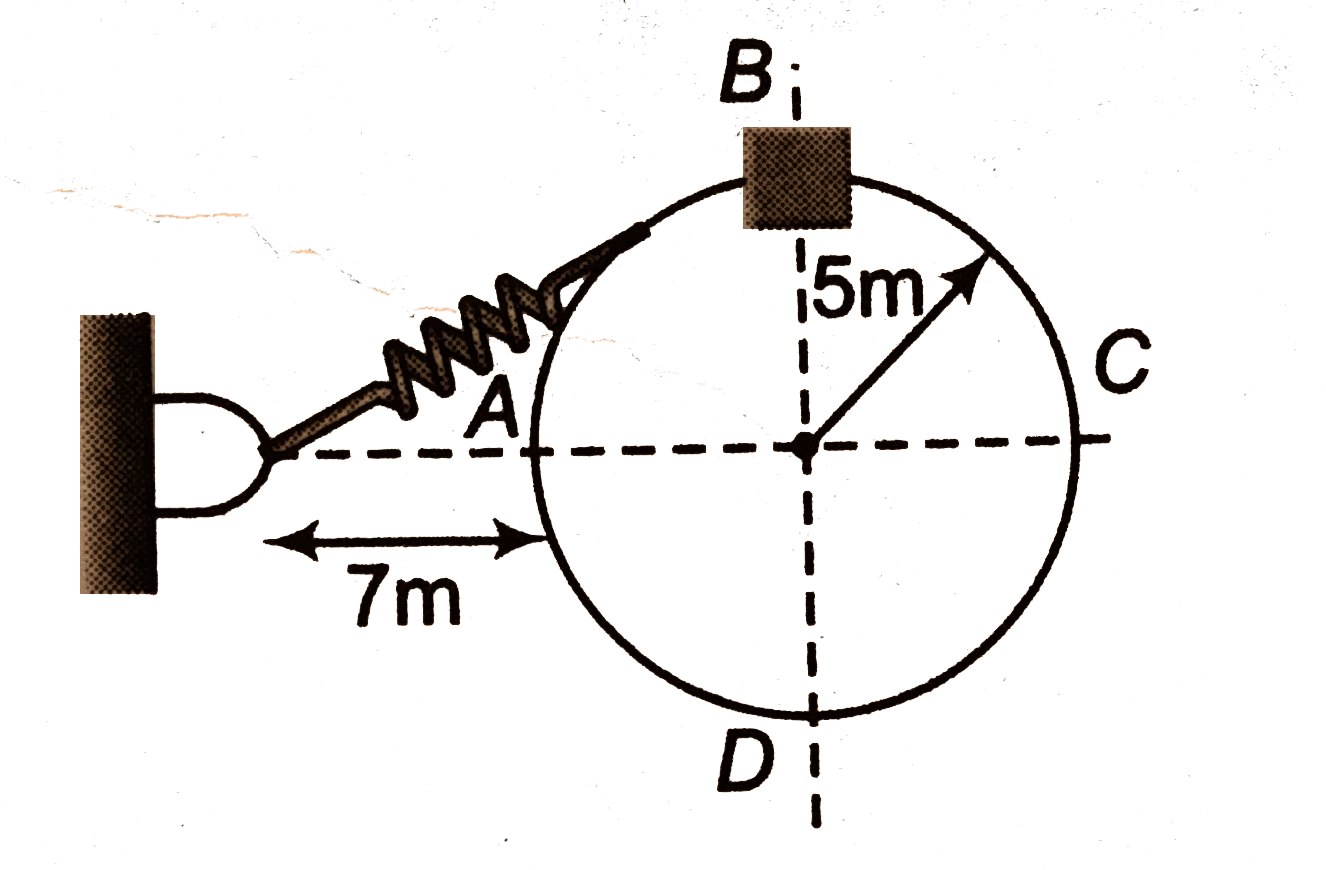
View SolutionFigure shows a smooth track, a part of which is a circle of radius r. A block of mass m is pushed against a spring of spring constant k fixed at the left end and is then released. Find the initial compression of the spring so that the block presses the track with a force mg when it reaches the point P, where the radius of the track is horizontal.
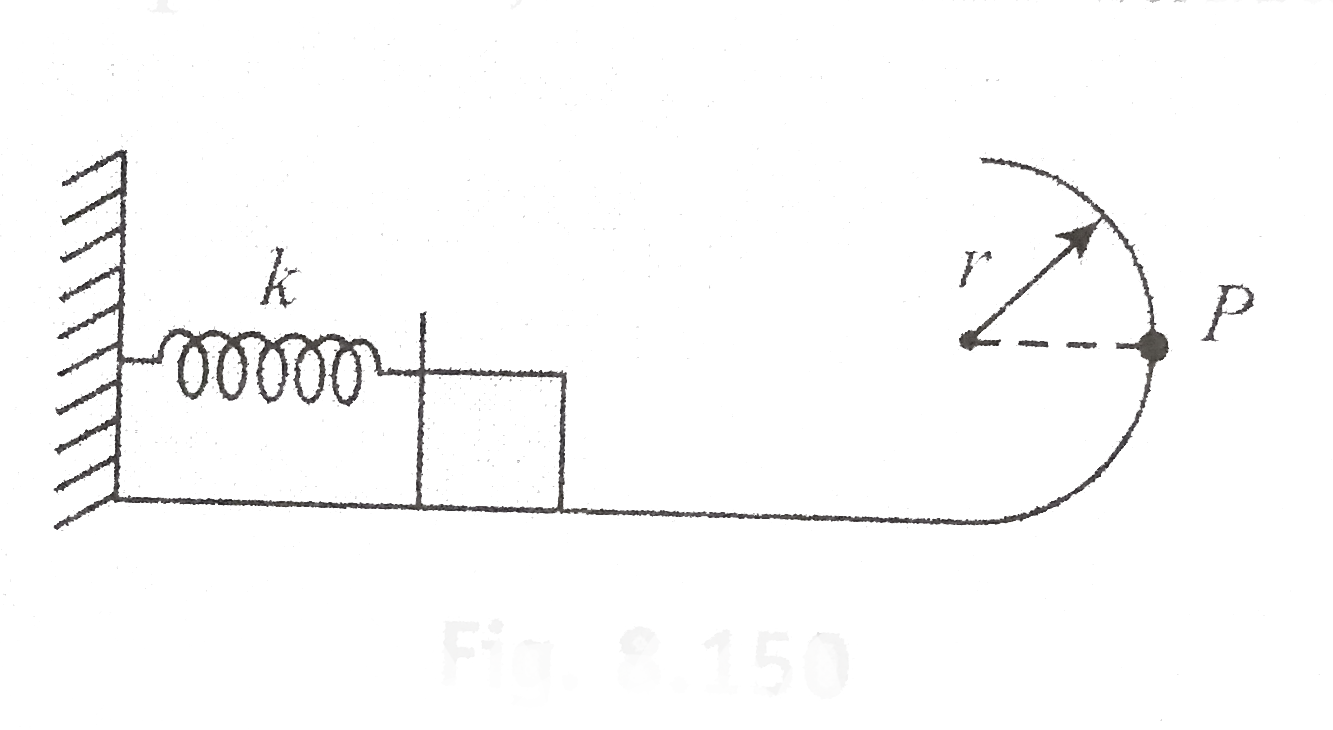
View Solution
